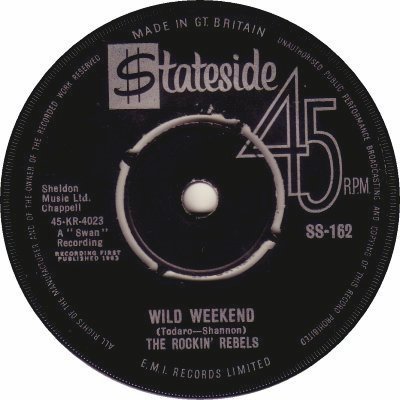
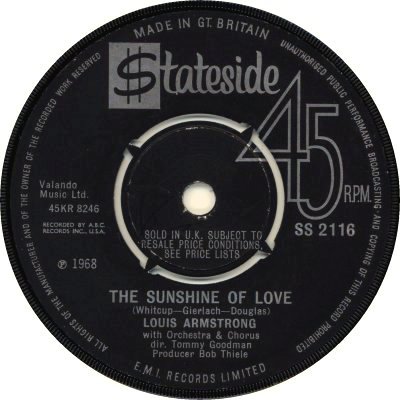
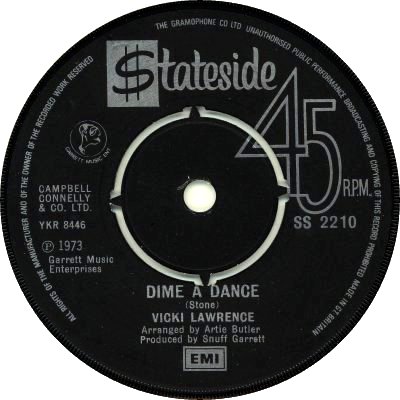
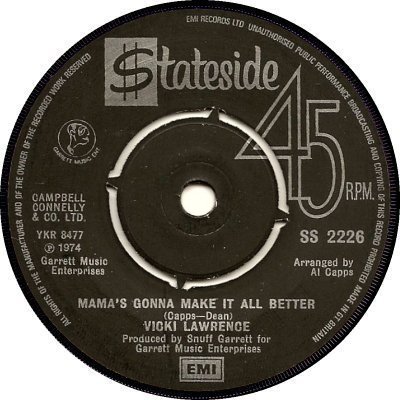
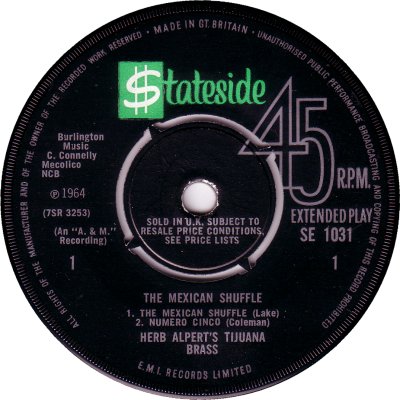
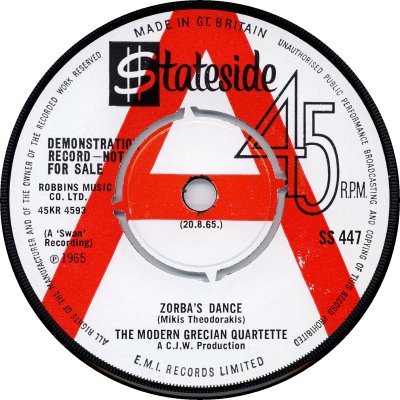
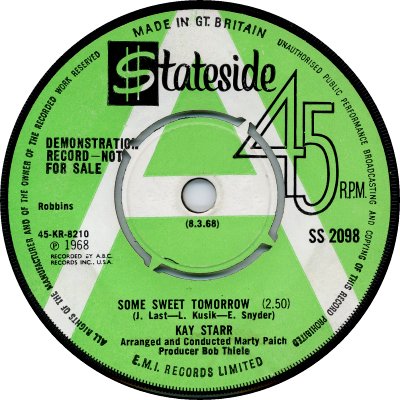
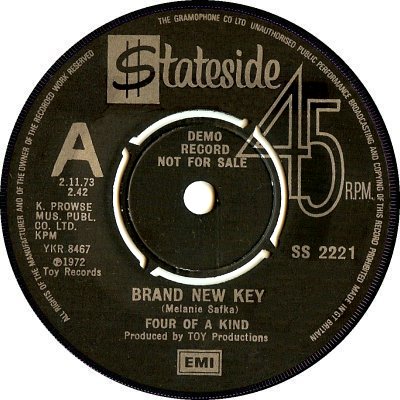
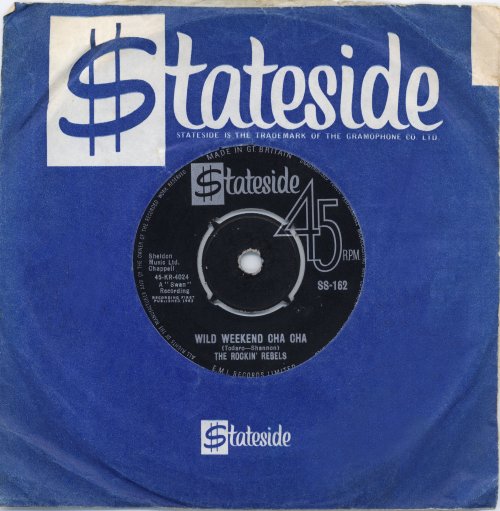
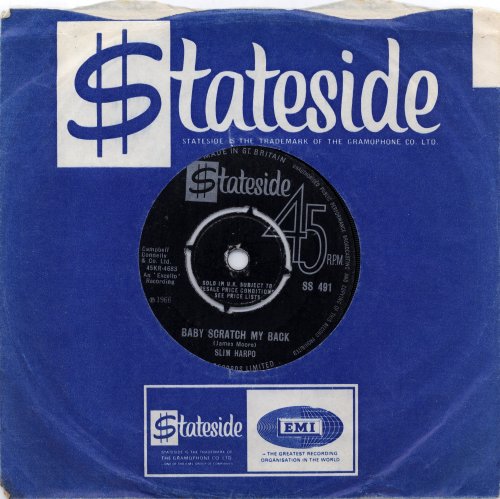
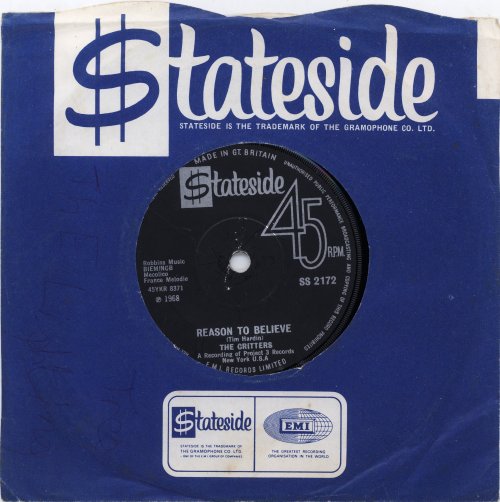
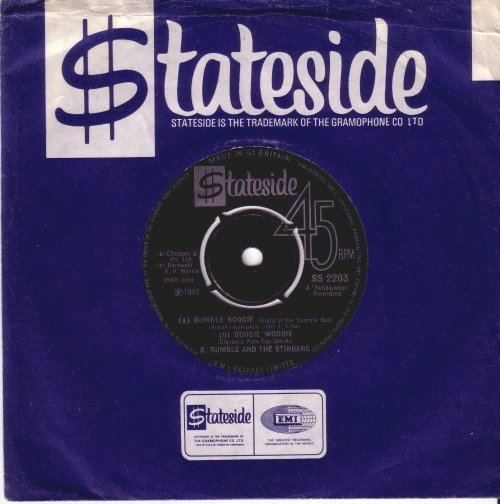
One of the EMI group of labels. From 1962-74 Stateside was EMI's outlet for product licensed from certain American companies. Its glory years were undoubtedly the '60s, when, with a wealth of riches to draw upon, it released many fine Soul and Blues records from companies such as Tamla, Bell and ABC, but its importance dwindled over the years as many of its suppliers started their own labels over here. Catalogue numbers started at SS-101 in 1962 and reached SS-599 in early 1967; they jumped to SS-2001 in February of that year in order to avoid confusion with Tamla Motown's numbers, which had also reached the 600s at that time ('Record Retailer', 23rd February). From 1968-c.70, one of the sources of licensed material, Dunhill, was given its own label designs and numbering series (SS-8000), which ran alongside the standard black label and the main SS-2000 catalogue numbers; this arrangement expired late in 1970 when Dunhill started its own British outlet, Probe (q.v.). The series was distinctive enough to deserve its own page - see Stateside Dunhill. Stateside's last reasonably successful year, in Chart terms, was 1970, when Three Dog Night scored a Number 3 with Mama Told Me Not To Come' (SS-8052; from Dunhill) and the Tams and Gene Pitney (twice) registered in the Top Forty. Its last hit came in 1972, with a reissue of 'Bumble Boogie', by B. Bumble & the Stingers (SS-2203); its last release appeared in 1974. From then onwards EMI International took over as EMI's main outlet for licensed American material from the smaller companies.
The label design seems to have remained basically the same throughout its lifetime, with only minor tweaks here and there. The legend 'Sold in the U.K....' under the spindle hole (2) appeared from January 1964 until July 1969; the first single to carry that inscription was SS-256, the last SS-2151. There were alterations on the perimeter credits, too. At the start of 1973 the 'Made In Great Britain' at the top was replaced by 'The Gramophone Co' and the reference to 'E.M.I. Records Ltd.' at the bottom was replaced by 'EMI' in a box (3). For the final two singles the reference to 'The Gramophone Co.' at the top was replaced by 'EMI Records' (4); the same kind of alteration was carried out on most of the other labels in the EMI group at around the same time. There was a slightly-adapted label for EPs (5). Demos followed the standard EMI pattern: initially they were white with a big red 'A' (6), but October 1966 the colour scheme changed to green with a white 'A' (7). The last half-dozen or so demos had issue labels with overprinting (8); that scan appears by kind permission of Alan Philips of the 45cat site. Thanks to Charlie Chalk of the same site for the fourth scan.
As for the company sleeves: the credits above the label hole remained basically the same throughout, but the logo at the bottom changed occasionally. It was simple until April 1964 (9), then it found itself enclosed in a box alongside a credit to EMI (10). The background of the logo was later filled in, and the corners of the box were rounded (11); from 1968 the box shrank in size (12). Stateside was revived occasionally in the 1980s for the odd release or two; it got a new lease of life in the 2000s, with the numbers starting where they had left off in 1974, at SS-2227 - the label design had similarities with the original green demo one. The discography below only lists issues from the 1970s.
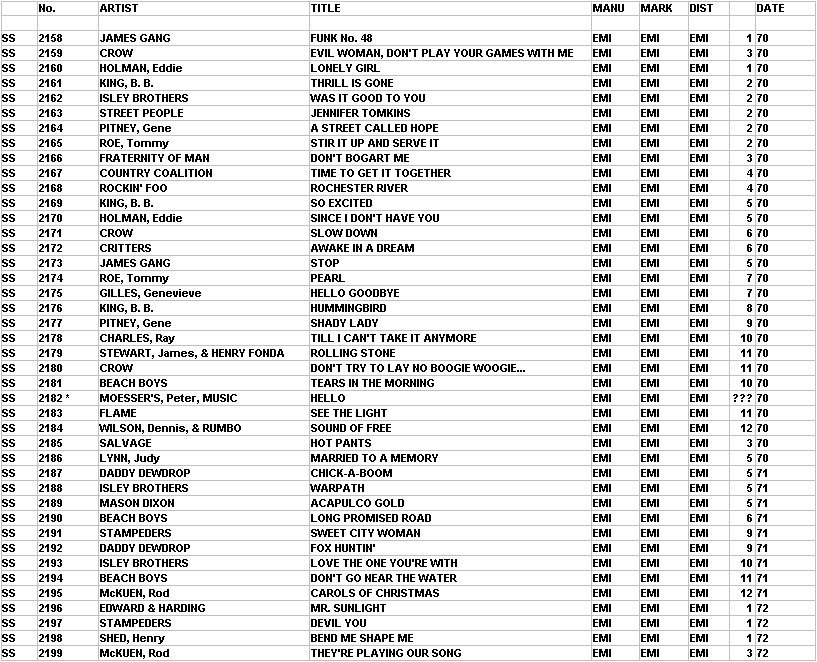
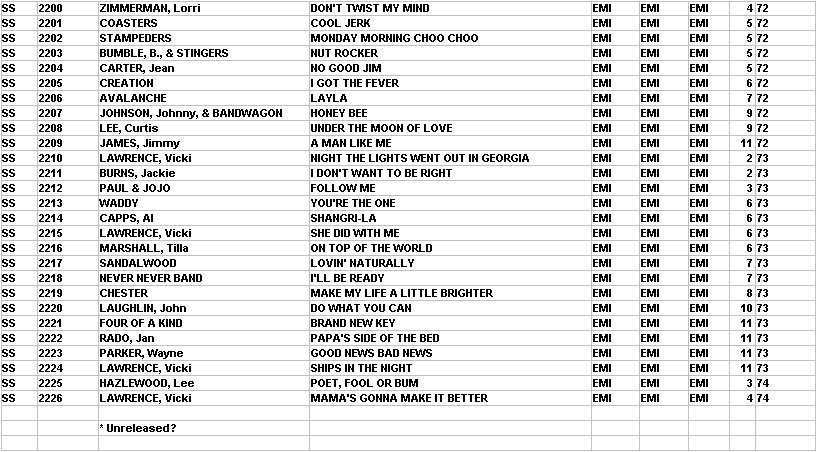


Copyright 2006 Robert Lyons.

